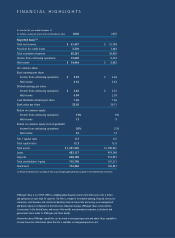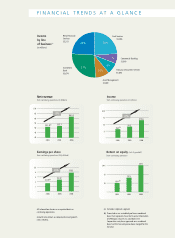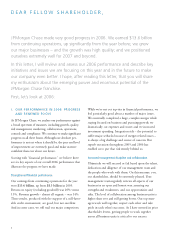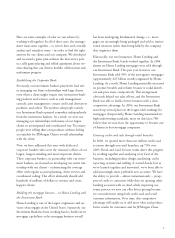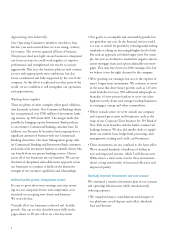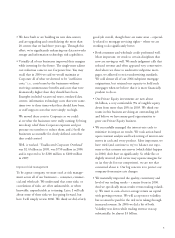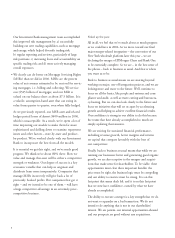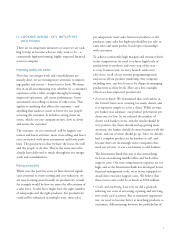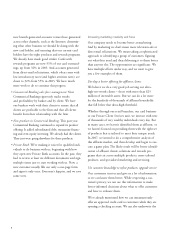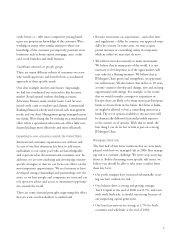JP Morgan Chase 2006 Annual Report Download - page 8
Download and view the complete annual report
Please find page 8 of the 2006 JP Morgan Chase annual report below. You can navigate through the pages in the report by either clicking on the pages listed below, or by using the keyword search tool below to find specific information within the annual report.6
Our Investment Bank management team accomplished
this improved risk management by: a) successfully
building out new trading capabilities, such as mortgage
and energy, which helped diversify trading risk;
b) regular reporting and reviews, particularly of large
risk positions; c) increasing focus and accountability on
specific trading risk; and d) more actively managing
overall exposures.
• We clearly can do better on Mortgage Servicing Rights
(MSRs) than we did in 2006. MSRs are the present
value of net revenue estimated to be received for servic-
ing mortgages, i.e., billing and collecting. We service
over $525 billion of mortgages, and our MSR is
valued on our balance sheet at about $7.5 billion. It is
a volatile, assumption-based asset that can swing in
value from quarter to quarter, even when fully hedged.
As we previously reported, our MSR asset and related
hedges posted losses of almost $400 million in 2006,
which is unacceptable. As a result, we’ve spent a lot of
time improving our models to make them far more
sophisticated and drilling down to examine repayment
issues and other factors – state-by-state and product-
by-product. We’ve worked closely with our Investment
Bank to incorporate the best from all the models.
It is essential we get this right, and we’ve made good
progress. We think we’re about 80% there. How we
value and manage this asset will be either a competitive
strength or weakness. Our degree of success is a key
economic variable that can help us originate and
distribute loans more inexpensively. Companies that
manage MSRs incorrectly will give back a lot of
previously booked profits. But companies that get it
right – and we intend to be one of them – will have
a huge competitive advantage in an extremely price-
competitive business.
Picked up the pace
All in all, we feel that we’ve made about as much progress
as we could have in 2006. As we move toward our final
major merger-related integration – the conversion of our
New York wholesale platform later this year – we are
declaring the merger of JPMorgan Chase and Bank One
to be essentially complete. So we are – in the best sense of
the phrase – back to business as usual. And that is where
you want us to be.
Back to business as usual means we are moving beyond
working on major, one-off integration projects, and we are
looking more and more to the future. We’ll continue to
focus on all the basics, like people and systems and com-
pliance and audit, as well as waste-cutting and bureaucra-
cy-busting. But we can also look clearly to the future and
focus on initiatives that will set us apart by accelerating
growth and helping us achieve excellent financial results.
Our confidence is strong in our ability to do this because
the teams that have already accomplished so much are
simply updating their mission.
We are striving for sustained financial performance,
including revenue growth, better margins and returns
on capital that compare favorably with the best of
our competitors.
Finally, back to business as usual means that while we are
running our businesses better and generating good organic
growth, we are also receptive to the mergers and acquisi-
tions that make sense for shareholders. To be viable, these
opportunities must clear three important hurdles: the
price must be right, the business logic must be compelling
and our ability to execute must be strong. It is on this
last point that many deals fail, and it is on this last point
that we now have confidence, earned by what we have
already accomplished.
The ability to execute a merger is a key strength that we do
not want to squander on a bad transaction. We do not
intend to do anything that is not in our shareholders’
interest. We are patient, our internal opportunities abound
and our prospects are good without any acquisitions.


